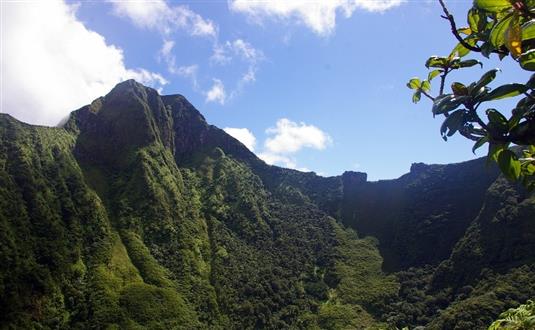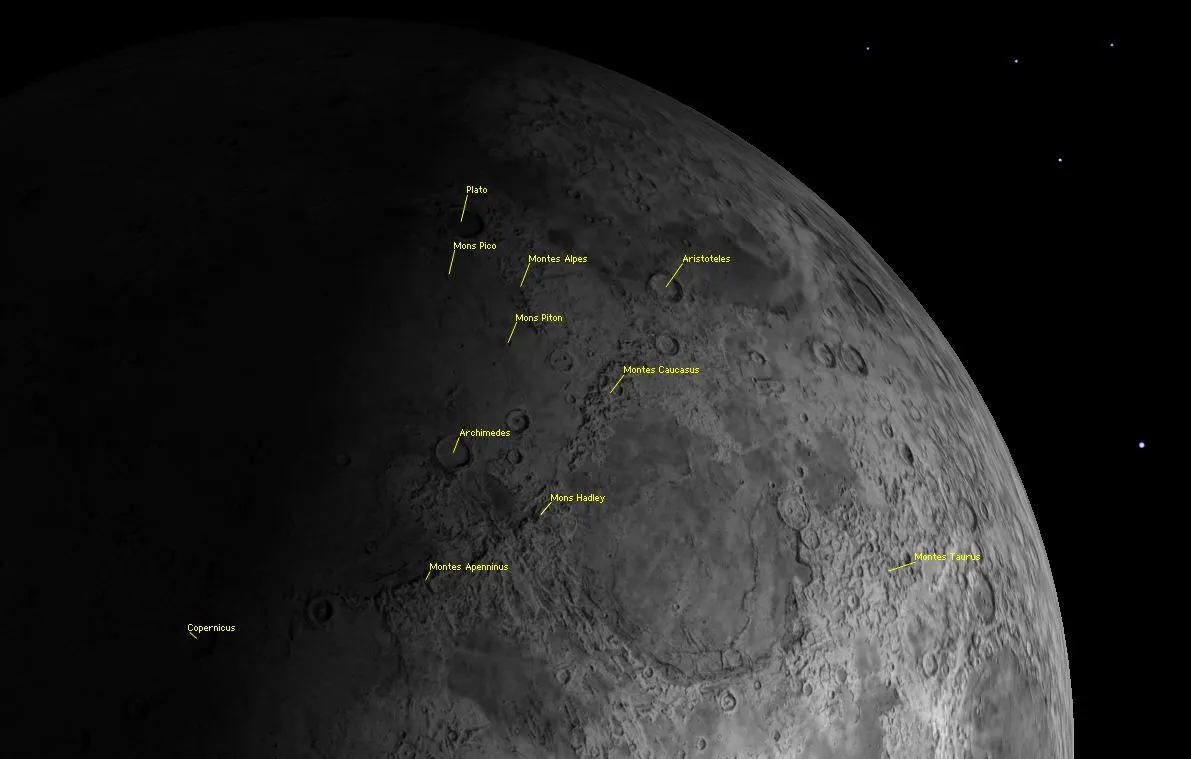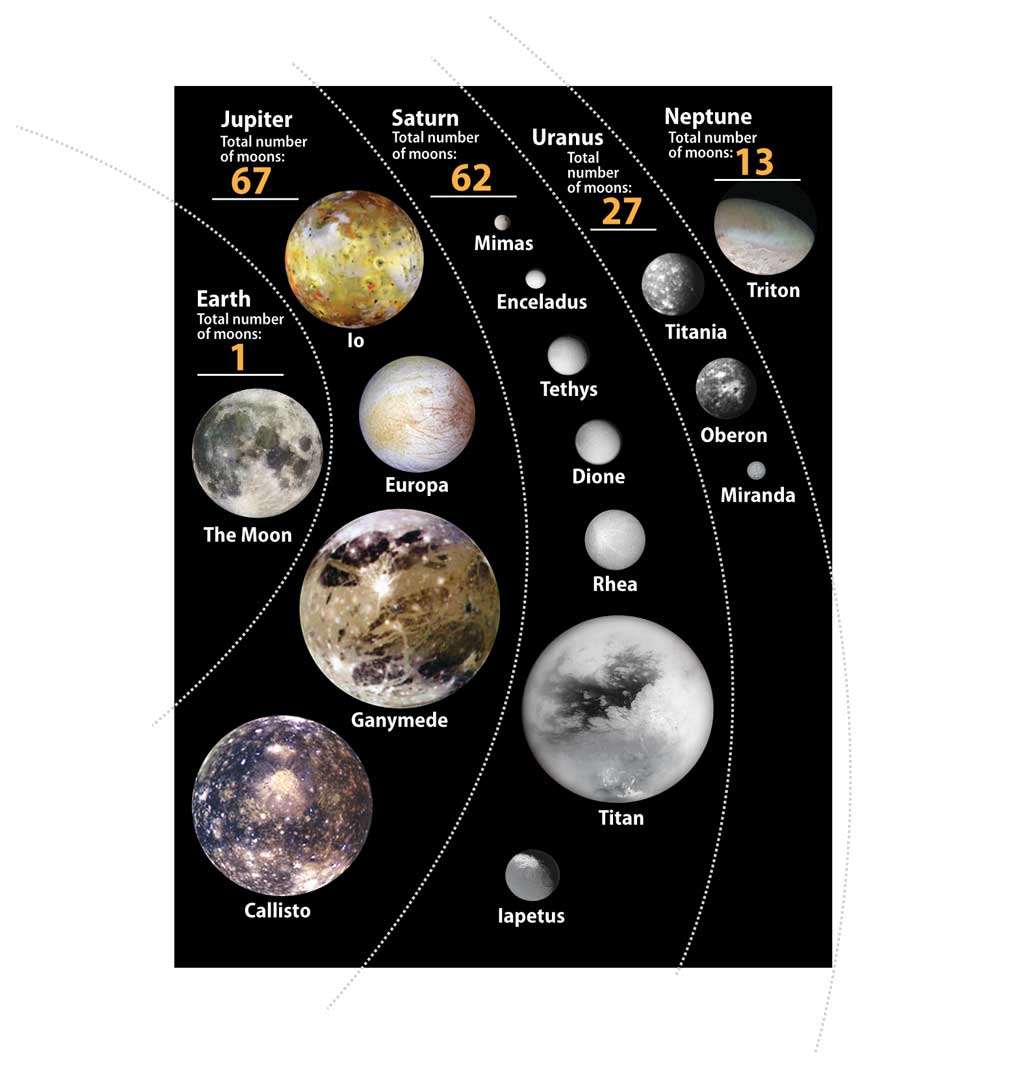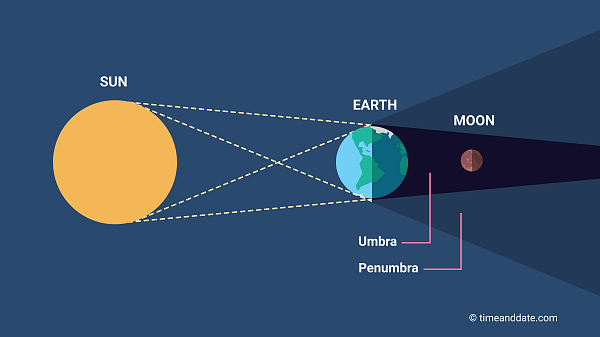10. Highest peak in Fiji is Mount Tomanivi. At 1324 meters in altitude is just slightly higher than Andorra la Velha, capital city of Andorra at 1050 m and way down from many American cities: Mexico City (2250 m ) or La Paz in Bolivia (3625 m). And it cannot be compared to the highest American altitude, Aconcagua Peak (6961 m) or the Asian monsters, like K2 (8611 m) or Everest (8849 m). Mount Tomanivi would be a pigmy compared to them.
1. Solar eclipse
A solar eclipse occurs when the Moon passes between the Sun and Earth, casting the Moon's shadow on Earth. A solar eclipse can only happen during a New Moon. On Aug. 21, 2017, a total solar eclipse made its way from Oregon to South Carolina. Fourteen states were in the path of total darkness — the first time a total eclipse covered such a wide swath of America since 1918.
2. The highest mountain in the Moon is Mons Huygens with an altitude of 5500 m not appearing in the frist photograph by itself but it is there. However, it is not the highest place in the moon. Strangely there is land, (or must we say moon) that is taller than that, Selenean Summit has an altitude of 10786 m, even higher than Everest, but it is not a mountain but a long long bulge on Moon surface with ramps of less than 3 degrees as it can be seen in the second photograph where you cannot appreciate a proper mountain.

4. Earth's only natural satellite
The Moon is Earth's only natural satellite. Its diameter is about one-quarter of Earth's (comparable to the width of Australia), making it the fifth largest satellite in the Solar System and the largest and most massive relative to its parent planet. It is larger than all known dwarf planets in the Solar System.

@ Alfa, i get it now , why u chose moon as a country .
5. Moon as habitable place for human
Ever since the Vikram lander ( part of India's mission moon) touched down on the lunar surface, there has been a steady flow of data and information from the instruments onboard the lander and the rover.
Separately, the information may look like some scientific hickery-pockery, but when you stitch them together you can read one message: the moon is more habitable than thought earlier.
The biggest supporter of this notion is the data point thrown up by the lander, which sent a probe down 10 cm into the lunar surface and measured the temperature there. It came up with the revelation that when the lunar surface is about 50o C hot, just 8 cm below the surface, it is as cold as minus 10o C. There is more to this data point than the ‘wow’ feeling it evokes.

Having said that, look at our beautiful darling earth!!!
6. Moons in the Solar System
There are currently 181 known moons in our solar system orbiting the various planets and dwarf planets. Of the 13 planets and dwarf planets, there are four which don't have any moons. These are the planets Mercury and Venus, and the dwarf planets Ceres and Makemake
One moon for Earth; two for Mars; 67 at Jupiter; 62 at Saturn; 27 at Uranus; 13at Neptune; and five for dwarf planet Pluto.
https://theplanets.org/moons/#:~:text=There%20are%20currently%20181%20known,various%20planets%20and%20dwarf%20planets.
7.lunar Eclipse
A lunar eclipse that occurs when the Moon moves into the Earth's shadow, causing the Moon to be darkened. Such alignment occurs during an eclipse season, approximately every six months, during the full moon phase, when the Moon's orbital plane is closest to the plane of the Earth's orbit.
This can occur only when the Sun, Earth, and Moon are exactly or very closely aligned with Earth between the other two, which can happen only on the night of a full moon when the Moon is near either lunar node. The type and length of a lunar eclipse depend on the Moon's proximity to the lunar node.
When the Moon is totally eclipsed by the Earth, it takes on a reddish color that is caused by the planet when it completely blocks direct sunlight from reaching the Moon's surface, as only the light reflected from the lunar surface has been refracted by the Earth's atmosphere. This light appears reddish due to the Rayleigh scattering of blue light, the same reason sunrises and sunsets are more orange than during the day.
Unlike a solar eclipse, which can only be viewed from a relatively small area of the world, a lunar eclipse may be viewed from anywhere on the night side of Earth. A total lunar eclipse can last up to nearly two hours, while a total solar eclipse lasts only a few minutes at any given place, because the Moon's shadow is smaller. Also, unlike solar eclipses, lunar eclipses are safe to view without any eye protection or special precautions.

aenoee:
@ komentator, w.r.t. last two lines,
Scientifically so correct. As moon receives light from the sun, n reflects it back, so is of less intensity.
Still, is given equal importance to that of solar eclipse when it comes to the field of astrology.
Nt able to decipher this one.
Me only always remember is as what i studied in elementary school





 AlfatogodeQFBere:
AlfatogodeQFBere: 112:
112:


